![Babe Ruth [Yankees] Babe Ruth in the locker room at Yankee Stadium, June 13, 1948, the day his number 3 was retired.](https://api.time.com/wp-content/uploads/2012/01/504539281.jpg?quality=85&w=2400)
In April 1947, the most famous and, arguably, most beloved ballplayer of all-time was honored at Yankee Stadium on “Babe Ruth Day.” Sixty-thousand fans filled The House That Ruth Built to pay tribute to a player who, even then, had already transcended the sport and become not merely a national icon, but an international star — a man whose eye-popping numbers (714 career home runs, more than 2,800 hits . . . a .342 lifetime batting average, fer chrissake!) and larger-than-life personality captivated grown-ups and kids, alike.
Here, on the anniversary of that April day, LIFE.com presents pictures made by photographer Ralph Morse — including many photos that were never published in LIFE — from Babe Ruth Day at the old Yankee Stadium, as well as from the Babe’s last public appearance a year later, in June 1948, just months before he died.
LIFE magazine, meanwhile, in its May 12, 1947, issue, reported on Babe Ruth Day thus:
On April 27 in baseball parks all over the nation the fans met to honor their greatest hero. Everywhere the game was held up while spectators listened to a broadcast from Yankee Stadium. There Babe Ruth, sick and old at 52, received eulogies, scores of gifts and an ovation that almost brought tears to his eyes. It was a big, dramatic ceremony.
This was fitting. Everything George Herman Ruth did was big and dramatic. His powerful bat earned the money to pay for Yankee Stadium, ‘the house that Ruth built.’ His warm, expansive personality gave baseball respectability after the [1919] Black Sox scandal has almost ruined it. To every boy in the land the great, wide smile and booming voice of the Babe were a personal inspiration.
Last week the booming voice had died to a hoarse murmur as the ailing Babe thanked his fans for their tribute. Then, with the thundering cheers of the crowd still ringing in his ears, Babe Ruth returned to his memories of a past glory.
For his part, explaining the reasons why the photos he made in 1948 a) are in color and b) never ran in LIFE, Morse reminded LIFE.com that the magazine “had one page a week dedicated to [breaking] news. All the other stuff — art, fashion, lifestyle — was printed a week in advance. But we had one page that was held open for a news picture, and when an editor called me that morning at home and told me to head over to Yankee Stadium, he asked if I had any black and white film. ‘I got two rolls of color,’ I told him. ‘That’s all I have in the house.’ ‘Okay,’ he said. ‘Go ahead, shoot it in color.’ And that’s it — that’s why the shots I took that day are in color.
“I took the pictures, and headed down to the LIFE offices with the film,” Morse recalls. “But when I got there, the managing editor says, ‘Sorry, Ralph. We couldn’t wait for you. We closed the page.’ That was that: the issue was closed, and I lost the page I was shooting for. I think they ran some Hollywood crap in there, instead. But that sort of thing happened all the time.”
Morse believes that the pictures of the obviously ailing Ruth “work so much better in color than they would in black and white. Because with black and white, you might get a sense of how frail Ruth was, but you wouldn’t really see it the way you do here. In black and white, you wouldn’t see how gray his face looked, how the cancer had really destroyed him. Ruth wouldn’t look as sick in black and white as he does in color. The man was dying — and it showed.”
(Coming back into the locker room after addressing the crowd on that June day in 1948 — so the story goes — Ruth was offered a beer by his old teammate, “Jumping Joe” Dugan, who asked the Babe how he was doing. Ruth took the beer, looked Dugan in the eye and said, “Joe, I’m gone.” Then he broke down in tears.)
“Everyone knew he was sick,” Morse said. “He’d been sick since 1946, when he was diagnosed with cancer — but when they held ‘Babe Ruth Day’ at the stadium, he didn’t even put on a uniform. Just came out in a suit, a long coat, that wool cap, and thanked the crowd. But those of us down there on the field, taking pictures — we could see how old he’d gotten. He wasn’t the Babe Ruth everyone remembers. He put a brave face on it, but he was ravaged.”
The Yankees retired Ruth’s famous No. 3 on June 13, 1948. Ruth’s Yankee teammate, the Lou “The Iron Horse” Gehrig, was the first major league player so honored, when his No. 4 was retired in 1939.
“It was moving,” Morse says, “being there in the locker room that day, knowing that Ruth’s number was going to be retired, that it was never going to be worn again on another Yankees jersey. But another thing, purely from a photographer’s point of view, is that the Yankees’ lockers were a bright, bright red, which in my experience was unusual. The color gave that quiet scene a bit of excitement. I mean, here’s this man — once an incredible athlete, but now literally gray, sick, trying to get his clothes on — with this great big number three on a bright red locker behind him. It was just such a striking scene.”
Liz Ronk, who edited this gallery, is the Photo Editor for LIFE.com. Follow her on Twitter @lizabethronk.
![Babe Ruth [Yankees] Babe Ruth in the locker room at Yankee Stadium, June 13, 1948, the day his number 3 was retired.](https://api.time.com/wp-content/uploads/2012/01/504539281.jpg?quality=75&w=2400)

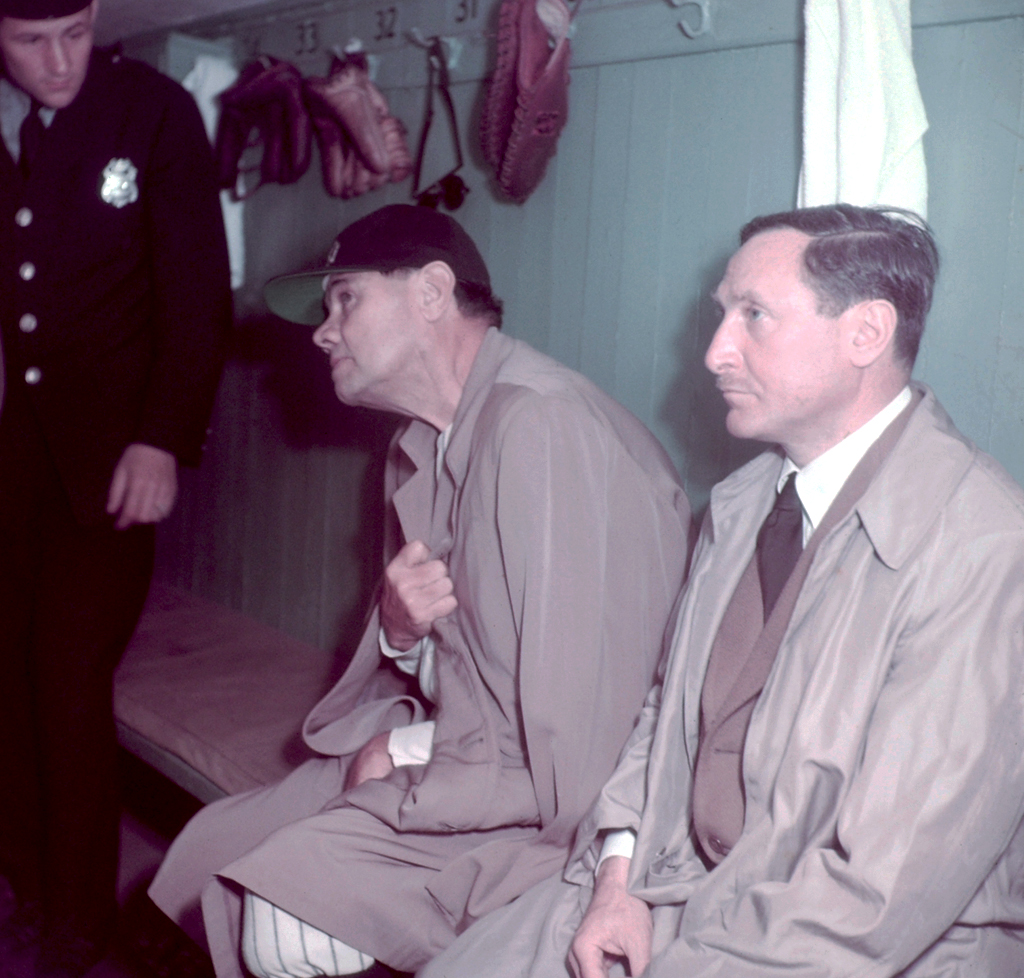
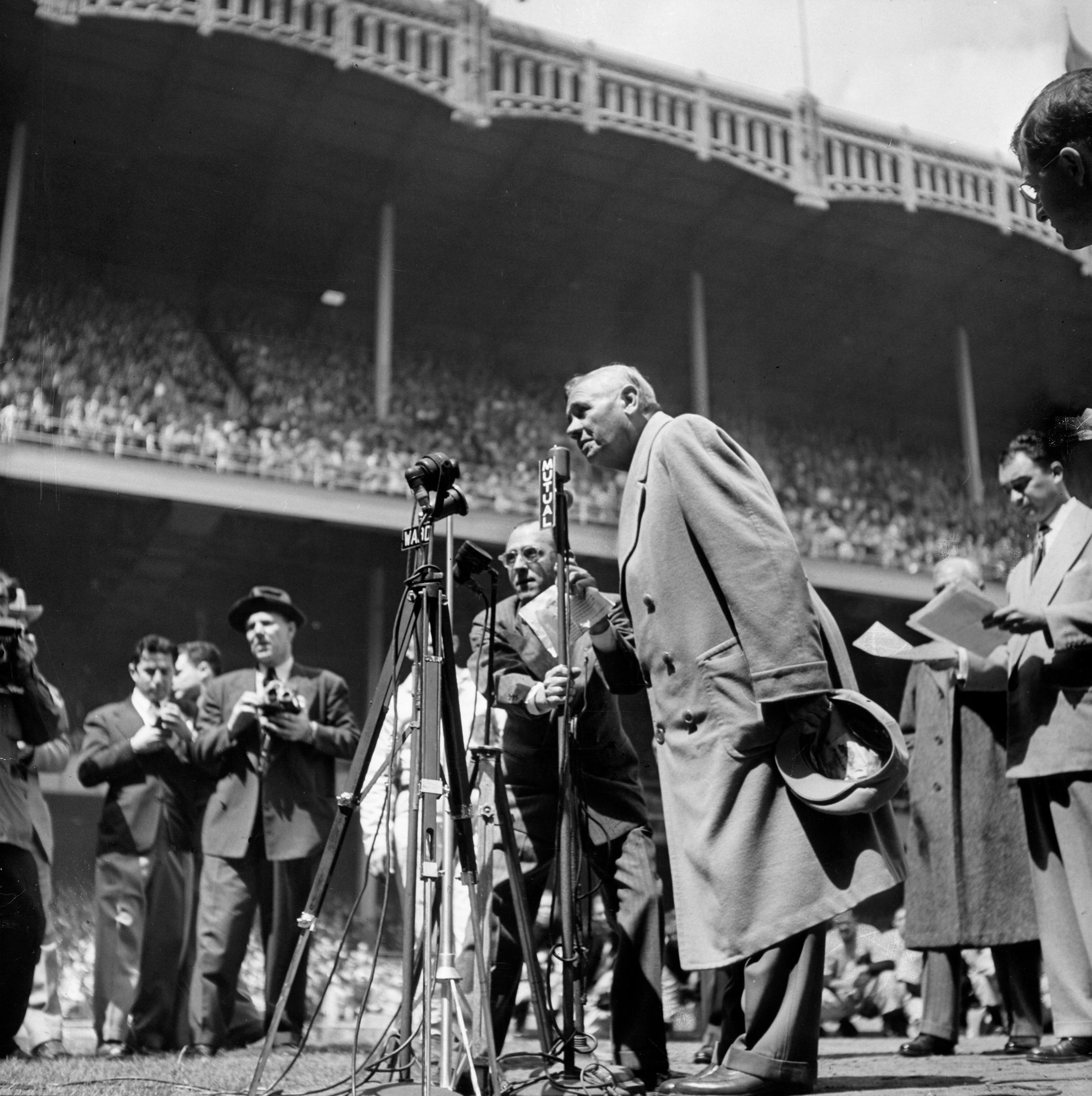
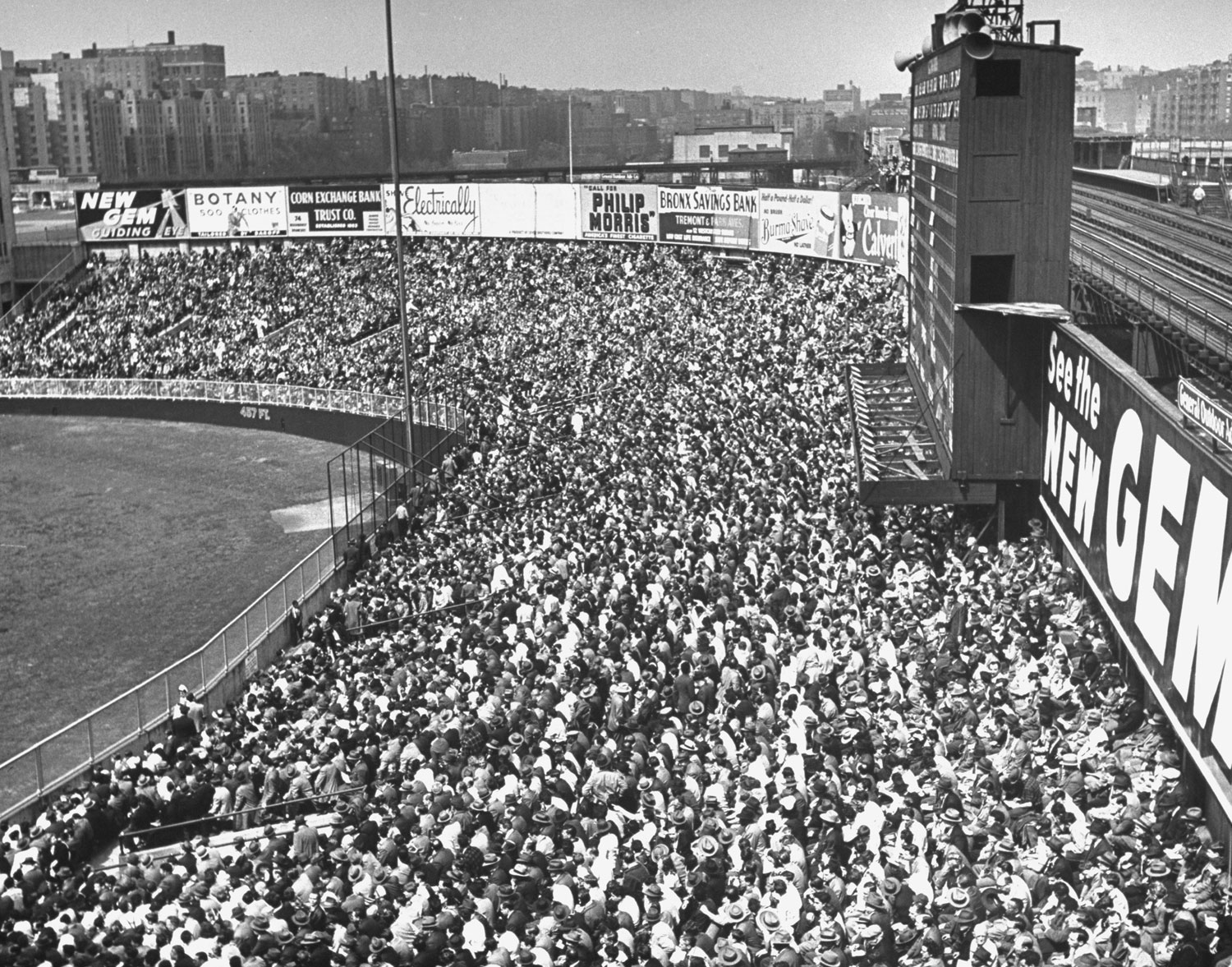

![Babe Ruth [Yankees] Babe Ruth waits to speak at Yankee Stadium, June 13, 1948, the day the Bombers retired his uniform number.](https://api.time.com/wp-content/uploads/2012/01/ugc1143141.jpg?quality=75&w=2400)
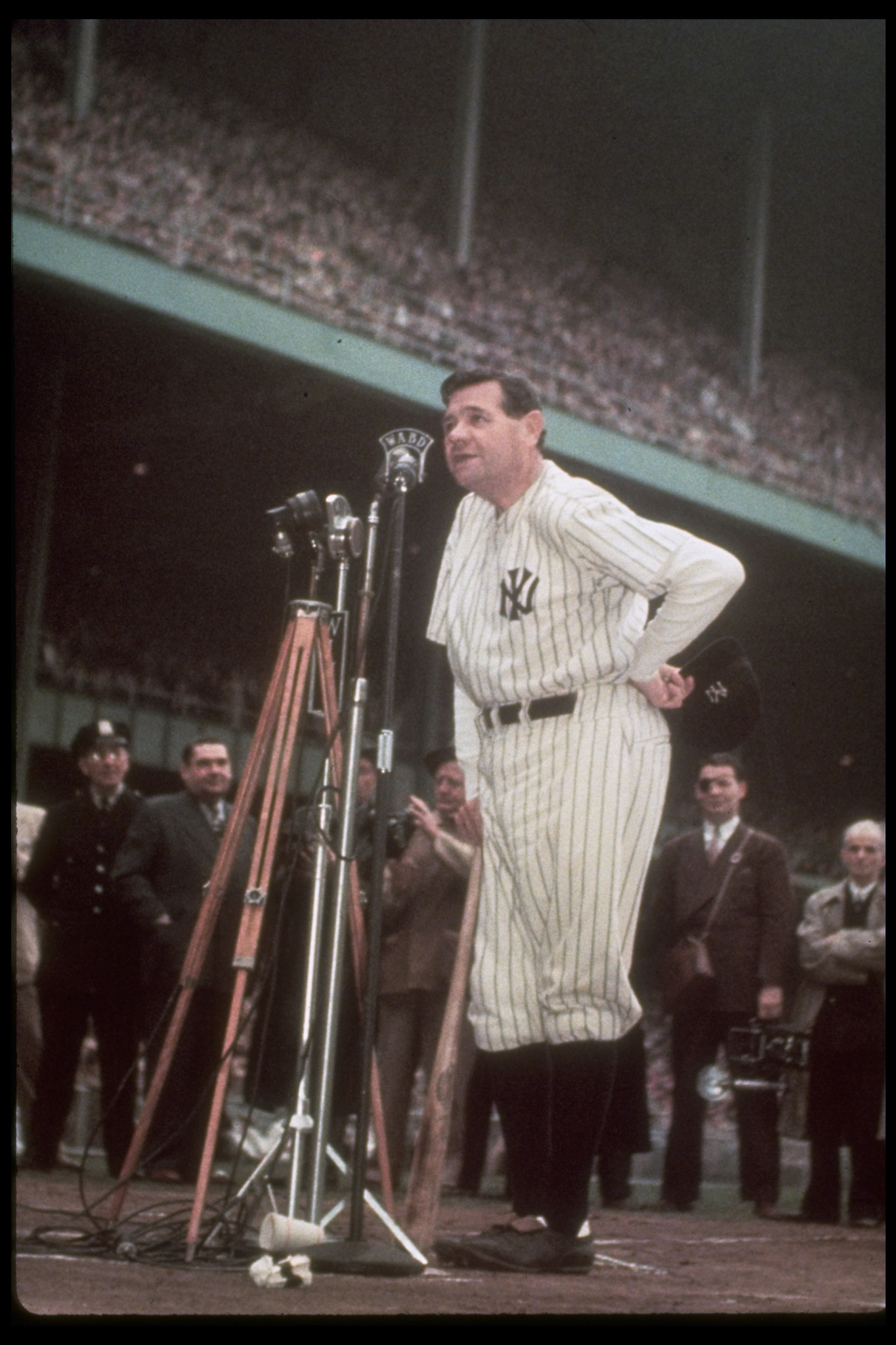
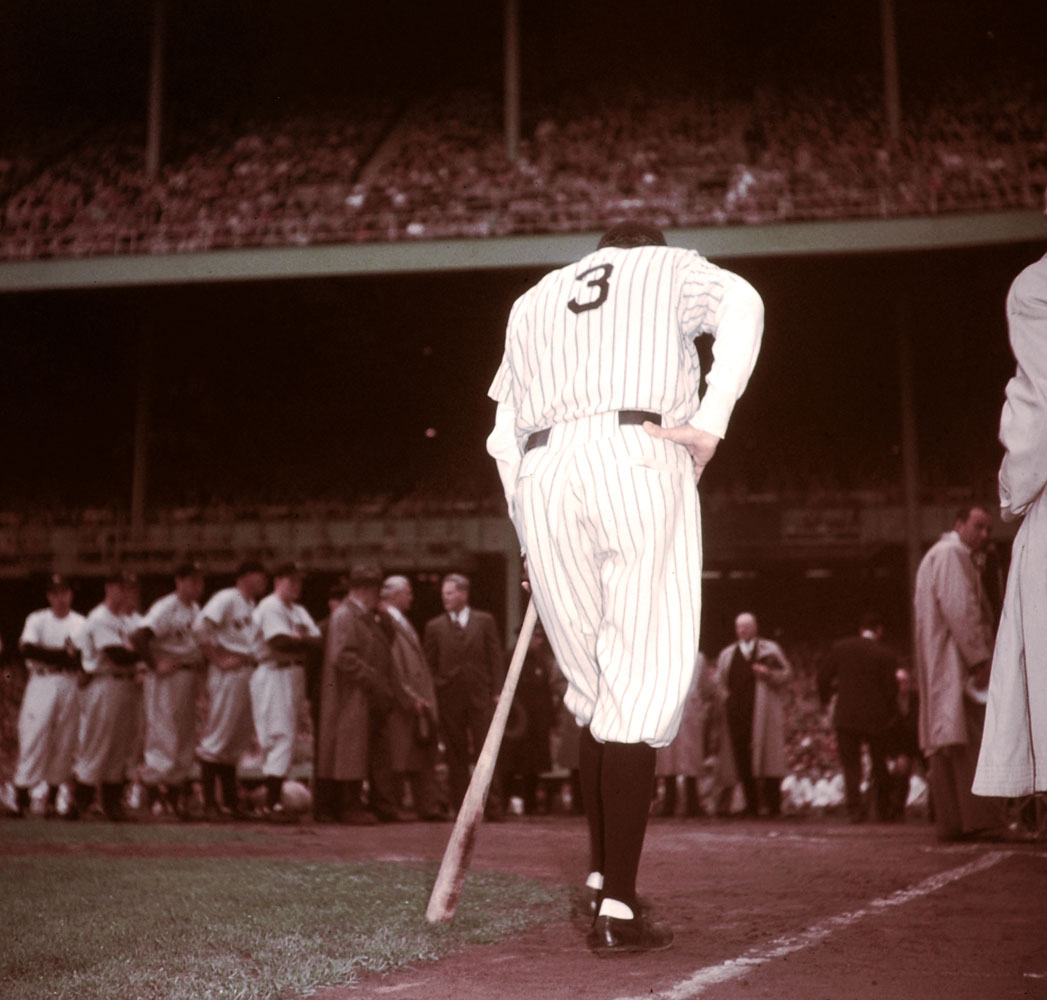
More Must-Reads from TIME
- Donald Trump Is TIME's 2024 Person of the Year
- Why We Chose Trump as Person of the Year
- Is Intermittent Fasting Good or Bad for You?
- The 100 Must-Read Books of 2024
- The 20 Best Christmas TV Episodes
- Column: If Optimism Feels Ridiculous Now, Try Hope
- The Future of Climate Action Is Trade Policy
- Merle Bombardieri Is Helping People Make the Baby Decision
Contact us at letters@time.com